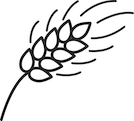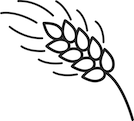Mental and Substance-Related Disorders: Diagnostic and Cross-Cutting Topics- Substance Use Disorder Treatment for People with Co-Occurring Disorders (4 credit hours)
Program Summary: This course explores the cooccurrence of substance use disorders and mental disorders. It focuses on the diagnosis and treatment of common co-occurring mental disorders, including depressive disorders, bipolar I disorder, posttraumatic stress disorder, personality disorders, anxiety disorders, schizophrenia and psychosis, attention deficit hyperactivity disorder, and feeding and eating disorders. DSM-5 diagnostic criteria and treatment approaches are examined, and case studies are given. The reading includes Chapter 4 of SAMHSA’s TIP 42 Substance Use Disorder Treatment for People with Co-Occurring Disorders.
This course is recommended for social workers, counselors, and therapists and it is appropriate for beginning and intermediate levels of practice.
Readings: Chapter 4-Tip 42 Substance Use Disorder Treatment for People with Co-Occurring Disorders
Publisher: SAMHSA
Course Objectives: To enhance professional practice, values, skills, and knowledge by exploring the diagnosis and treatment of common co-occurring mental disorders.
Learning Objectives: Identify common co-occurring mental disorders, DSM-5 diagnostic criteria, and treatment approaches. Compare independent versus substance-induced mental disorders. Describe how substances may mimic common mental disorders.
Review our pre-reading study guide.
Free State Social Work, LLC, provider #1235, is approved as an ACE provider to offer social work continuing education by the Association of Social Work Boards (ASWB) Approved Continuing Education (ACE) program. Regulatory boards are the final authority on courses accepted for continuing education credit. ACE provider approval period: 9/6/2021 - 9/6/2024. Social workers completing this course receive 4 clinical continuing education credits.
Free State Social Work has been approved by NBCC as an Approved Continuing Education Provider, ACEP NO. 6605. Programs that do not qualify for NBCC credit are clearly identified. Free State Social Work is solely responsible for all aspects of the programs.
G.M. Rydberg-Cox, MSW, LSCSW is the Continuing Education Director at Free State Social Work and responsible for the development of this course. She received her Masters of Social Work in 1996 from the Jane Addams School of Social Work at the University of Illinois-Chicago and she has over 20 years of experience. She has lived and worked as a social worker in Chicago, Boston, and Kansas City. She has practiced for many years in the area of hospital/medical social work. The reading materials for this course were developed by another organization.





